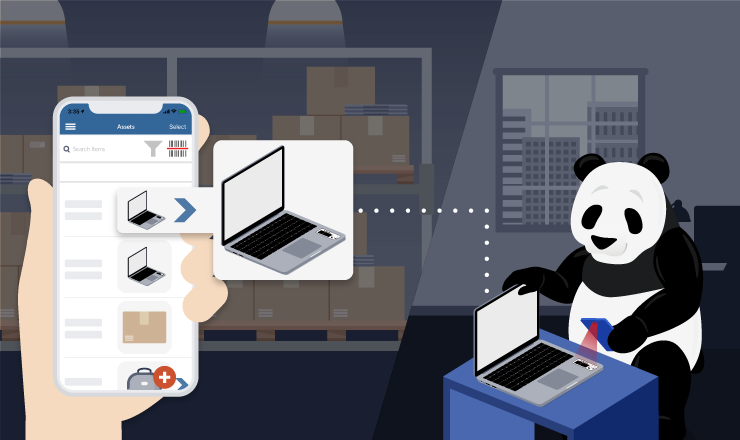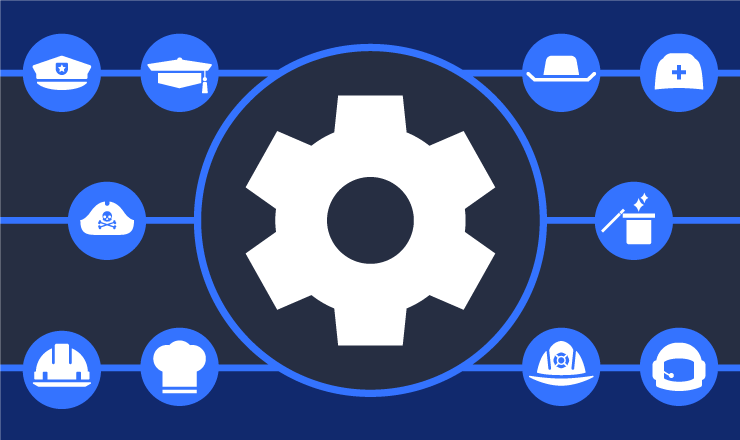The History of Communication in the Workplace

Take Control of Your Assets
A personalized demo is just one click away.
Communication in the workplace has evolved dramatically. Face-to-face communication was once the only option, followed by the development of landlines, computers, mobile phones, webinars and, perhaps one day very soon, virtual reality.
It's mind-boggling to consider that in just 72 years, we’ve evolved from the very first computer (which took three years to build, occupied about 1,800 square feet and used about 18,000 vacuum tubes, weighing almost 50 tons) to our modern-day environment of practically total connectivity, the apex of which is the forthcoming Internet of Things. Also reflective of this hyper-connectivity is the growing popularity of open workspaces in which there are no more cubicle walls. If there’s one constant in workplace communication, is that it’s always changing. And we’re not done yet.
The diversity of communication media from which we now have to choose has affected our productivity, enabling us to connect with colleagues across the ocean without leaving our desks. We can create and share proposals and reports, sign contracts and so much more within mere seconds. Thanks to the rich data environment in which we all now work, it’s now possible to put some numbers around our productivity and track it on an ongoing basis.
Thanks to the rich data environment in which we all now work, it’s now possible to put some numbers around our productivity and track it on an ongoing basis.
Let’s review some historical highlights in our workplace communication evolution:
‘Ancient’ History: Pagers and Time-Share Computers
Another giant leap forward in workplace communication took place in 1961 when the Massachusetts Institute of Technology (MIT) developed the Compatible Time-Sharing System (CTSS), one of the first time-sharing operating systems. The term “time-sharing operating system” allows multiple users to tap into a computer’s resources. In other words, many people can use a single computer, each for a specified amount of time. Early computers were prohibitively expensive, so this arrangement was beneficial from a cost standpoint. Users could use in essence “time-share” a computer. This arrangement required users to coordinate their schedules and projects and communicate regularly to take full advantage of nascent computing technology and maintain high productivity.
The Federal Communications Commission first approved the pager for public use in 1958. It was a game-changer for workplace communication. Initially, pagers were used only by emergency personnel: firefighters, police offers, medical professionals. It wasn’t until 1964 that the first consumer pager was introduced by Motorola for public use. The pager couldn’t store messages; it only alerted wearers by issuing various beeps. In essence, pagers broke down office walls and kept employees in touch even outside their places of employment.
Technological Breakthroughs: Personal Computers and Cell Phones
The first personal computers were introduced to the marketplace in 1975. These computers required user assembly, as they arrived in kits. In the years that followed, a multitude of companies launched their versions of the personal computer, and with mixed success. Apple II and IBM PC were among the most popular. By 2001, 125 million personal computers were shipped, compared to 48,000 in 1977; and by 2002, more than 500 million PCs were in use worldwide.
Company-issued cell phones, meanwhile, became more common in the late 1990s. Blackberry devices competed with flip phones, and then the iPhone 3G made its debut, transforming mobile technology as we knew it with its easy touchscreen and intuitive interface. The World Wide Web went live Aug. 6, 1991, and officewide internet connections began, allowing employees not only to research information but also communicate via email and online message boards.
At this point in workplace communication history, there really was no such thing as a 9-to-5 workday anymore. In many respects, technology kept employees virtually tethered to the office.
The Cutting Edge and Beyond: Cloud Computing and More
The evolution continues. These days, workplace communication is being reshaped yet again – this time by cloud computing. Cloud computing is scalable and enables companies to save money on their IT expenses, enjoy better communication in the workplace, collaborate more efficiently and work from almost anywhere in the world, among many other benefits. Cloud storage also allows for greater efficiencies. Take, for example, asset management via the cloud. With cloud-based fixed asset management software, your organization can implement a simple yet powerful means of managing and tracking your vital assets, which represent among your most substantial investments. Such technology provides an alternative to expensive software and hardware, saves you valuable time and can increase accuracy and accountability throughout your organization. Additionally, you benefit from more storage space, anytime access to your data, better flexibility, natural disaster recovery and improved communication.
The latest iteration in workplace communication, asset tracking improves coordination, productivity, and efficiency among organizations of every size. By closing the loop among all stakeholders, asset tracking platforms can increase accountability and accuracy throughout your entire organization.
Let Asset Panda show you how our cloud-based asset tracking software can save you time and money.
Take Control of Your Assets
A personalized demo is just one click away.
Related News & Press

Learn more from an Asset Panda expert
Get a FREE consultation with an asset tracking expert to find out how you can transform your asset tracking.
Contact our Sales Team at (888) 928-6112


